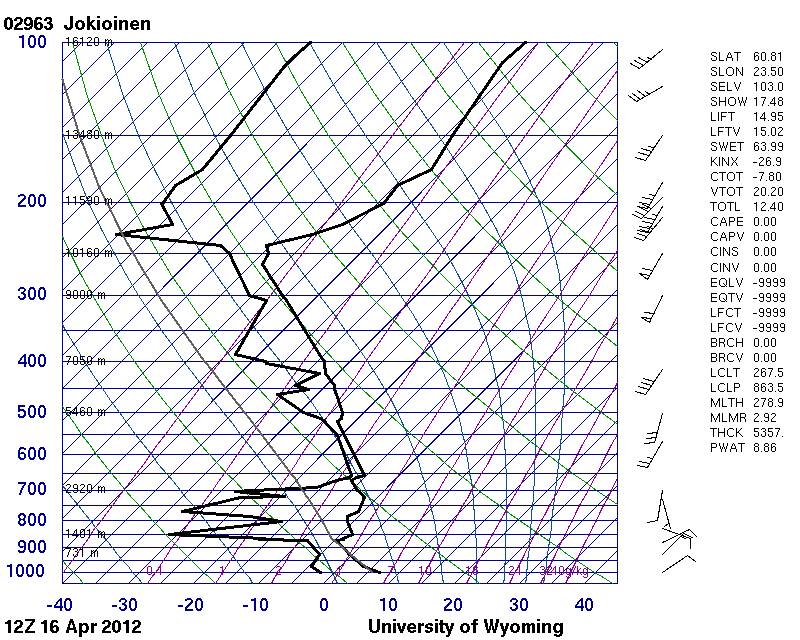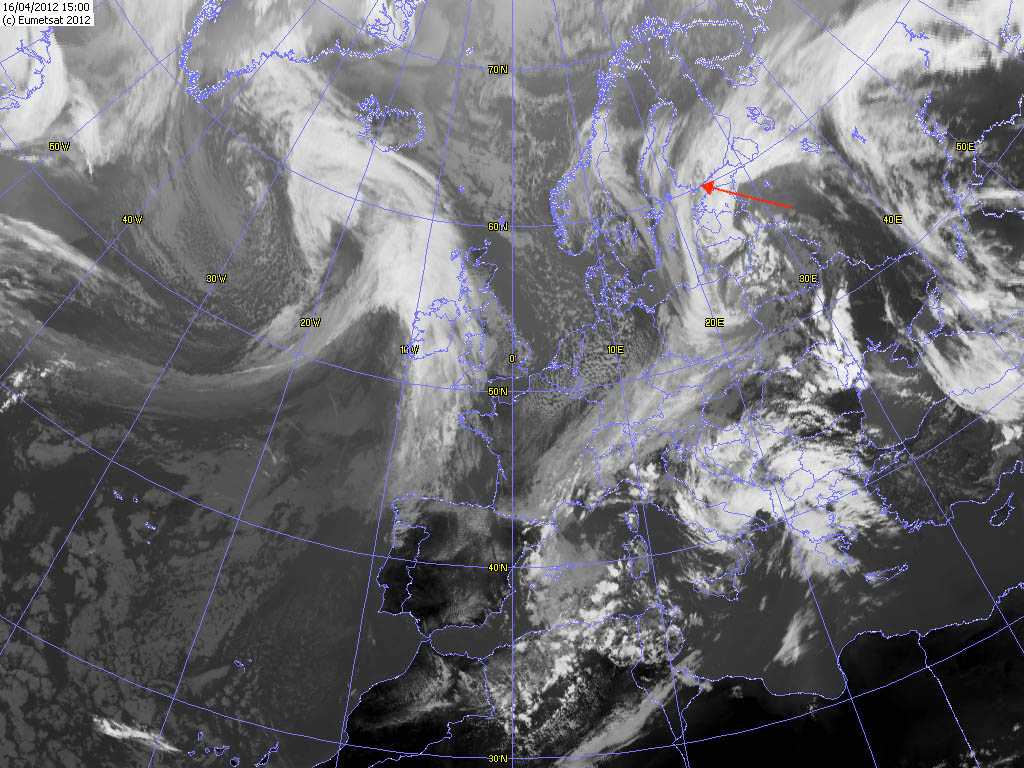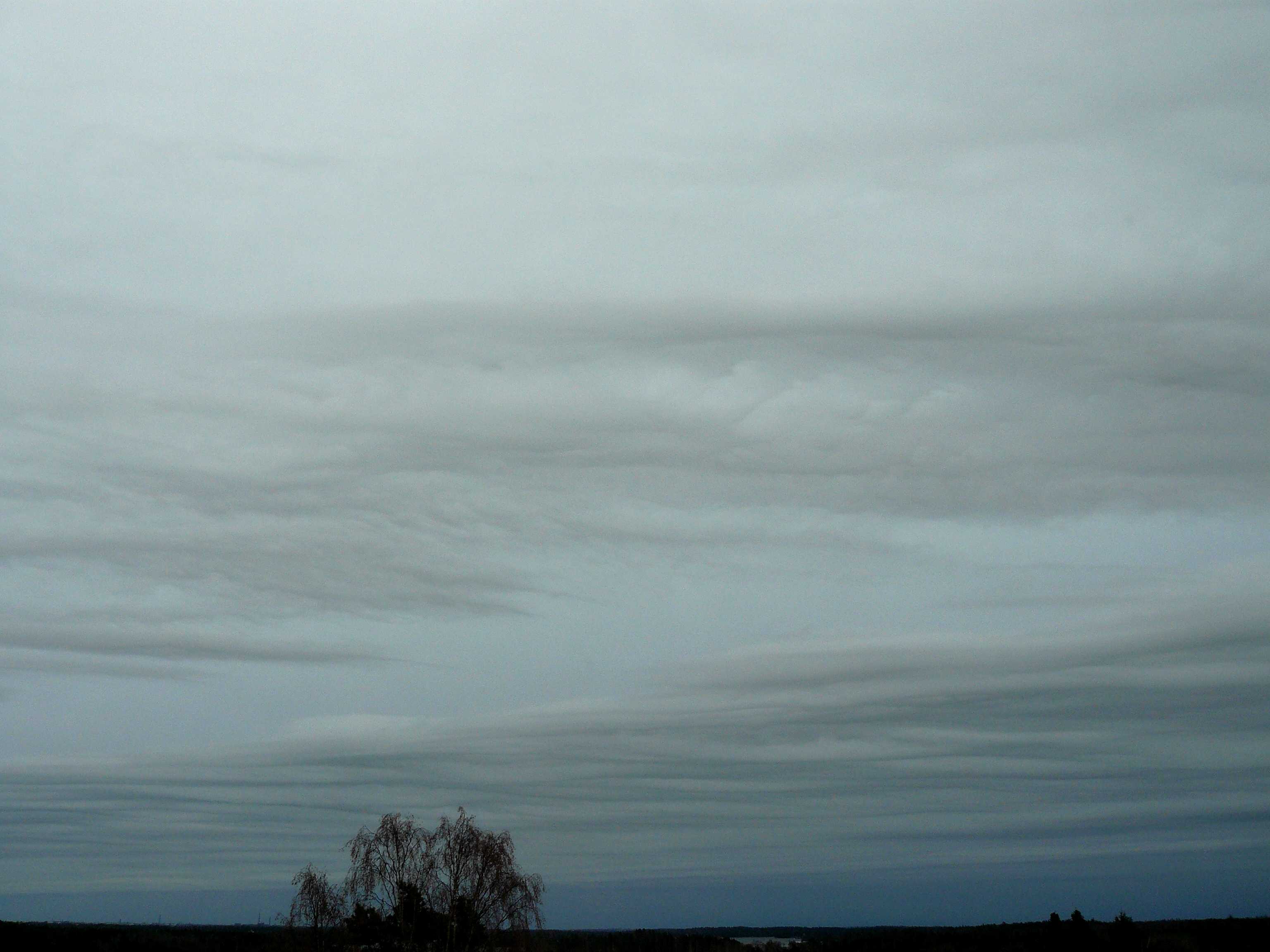© Jarmo Koistinen
Espoo, Finland
Latitude: 60° 0' 0'' N
Longitude: 25° 0' 0'' E
16 April 2012 1952 (Local Time)
Camera direction: towards E
Image P/S code: S.5.2
Image I.D.: 3706
CL = 5, CM = 2, CH = /
-
Altostratus opacus and Stratocumulus stratiformis undulatus
The image shows a patch of Stratocumulus close to the camera and a sheet of Stratocumulus toward the horizon. The patch is too small to determine its degree of transparency; the sheet appears marginal between tranlucent and opacus and was identified as opacus. The Stratocumulus has merged elements arranged in nearly parallel lines; this is the variety undulatus. The base of the Stratocumulus was measured at 900 m. Through the gaps of the Stratocumulus can be seen a uniformly grey extensive layer of Altostratus opacus. On the horizon is the leading edge of widespread precipitation ahead of a warm front. Radar showed this leading edge at a distance of 30 km or more; that is, beyond the visual horizon at ground level.
Nimbostratus praecipitatio with continuous rain was observed an hour later.
Links in the image description will highlight features on the image. Mouse over the features for more detail.
© Jarmo KoistinenEspoo, FinlandLatitude: 60° 0' 0'' NLongitude: 25° 0' 0'' E16 April 2012 1952 (Local Time)Camera direction: towards ECL = 5, CM = 2, CH = /Image P/S code: S.5.2Image I.D.: 3706
An extratropical wave cyclone is moving from the Baltic states towards the north at distance of 250 km from the image site and is associated with a warm front; the front moves very slowly to the north-west.
© Deutscher Wetterdienst The sounding is from 90 km to the north-north-west, five hours prior to photo. The middle level moisture is expected to have lowered, as indicated by ceilometer heights of 2 700 m for the Altostratus.© University of Wyoming
The sounding is from 90 km to the north-north-west, five hours prior to photo. The middle level moisture is expected to have lowered, as indicated by ceilometer heights of 2 700 m for the Altostratus.© University of Wyoming Extensive frontal cloud band over southern Finland. Cloud band is thinner over Espoo and thicker to the east and west.© EUMETSAT, 2012
Extensive frontal cloud band over southern Finland. Cloud band is thinner over Espoo and thicker to the east and west.© EUMETSAT, 2012
Altostratus opacus praecipitatio
The photo shows a light to mid grey, almost overcast layer of Altostratus, sufficiently thick enough in most parts to mask the Sun. It is not Nimbostratus, as the light grey areas would reveal the position of the Sun and Nimbostratus is featureless. This layer has wave patterns, indicating the variety undulatus.
Light rain can be seen to the south-south-west and virga or light rain can be seem to the south-east. The dark, horizontal band from the south-east through to the south-south-west is the melting level where ice crystals in the cloud are melting.
Links in the image description will highlight features on the image. Mouse over the features for more detail.
© Michael BruhnMordialloc VIC 3195, AustraliaLatitude: 38° 0' 40'' SLongitude: 145° 5' 3'' E04 July 2015 1507 (Local Time)Camera direction: towards SECL = 0, CM = 2, CH = /Image P/S code: P.5.2Image I.D.: 5981
